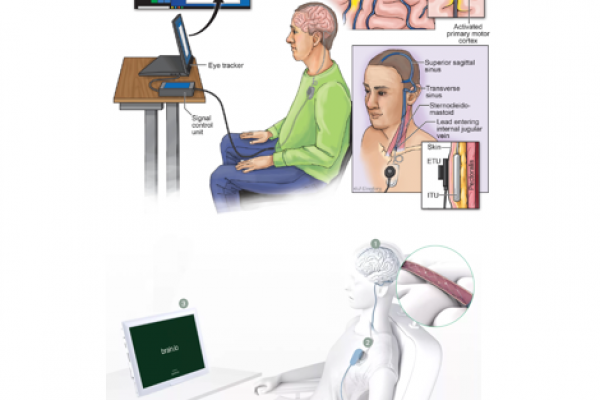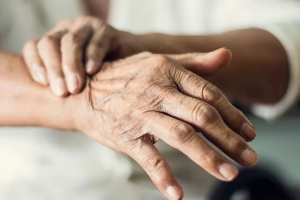Synchron Company; The first invasive BCI system in commercial use
In the previous articles, we got acquainted with the structure of the invasive BCI system and the Blackrock Neurotech as the first leading company in the field. Through this article, we are going to discuss one other company besides Blackrock Neurotech which has implanted a BCI long-term in humans.
Although research achievements have attracted a flurry of attention from the media and investors, the field remains a long way from improving day-to-day life for people who’ve lost the ability to move or speak. Currently, study participants operate BCIs in brief, intensive sessions; nearly all must be physically wired to a bank of computers and supervised by a team of scientists working constantly to hone and recalibrate the decoders and associated software. “What I want,” says Hochberg, speaking as a leader of the first invasive human BCI system, “is a device that is available, that can be prescribed, that is ‘off the shelf and can be used quickly.” In addition, such devices would ideally last users a lifetime.
Synchron in New York City has developed a ‘stentrode’ — a set of 16 electrodes fashioned around a blood-vessel stent11. Fitted in a day in an outpatient setting, this device is threaded through the jugular vein to a vein on top of the motor cortex. First implanted in a person with ALS in August 2019, the technology was put on a fast-track review path by the FDA a year later. Now it is introduced as the first company that received the necessary permits for the commercialization of this technology.
BCI Synchron system consists of four main parts:
- Brain activity recording: The stentrode records neuronal activity along with a transmitter-receiver device implanted above the chest under the skin of the user. It receives raw data from the electrode and transmits it to an external decoder.
- Decoding system: A machine learning algorithm extracts information from the raw data and translates those signals into specific digital commands.
3&4. Sensory output and feedback: They are an eye tracking system and user interface installed on a personal computer. In other words, the output in this system is the mouse pointer. The eye tracker recognizes the desired location of the person on the screen and the user can move the pointer, zoom, or click based on the extracted brain signals. Also, the visual feedback resulting from the performed activity will lead to better interaction between the person and the device.
The most important advantage of Synchrone over other companies is simple, low risk, and less expensive surgery, which increases the possibility of public access. However, this system also currently has limitations on commercialization:
- The samples provided by this company are 16 electrodes that are placed at a distance from the brain tissue. The small number of channels and the distance from the source of signal production are two factors that caused the raw data in this method to have a small volume and lower accuracy (compared to the direct spike recording data)
- The location of the electrodes in the current samples is limited to primary motor area. They should proof the possibility of recording data from any other area through veins.
- Increasing the possibility of blockage and rupture of blood vessels or even stroke is a possible risk of this method in the long-term usage.
With all these consideration, Thomas Oxley (Founder and CEO of Synchron Company) dreams of a million implants a year, which is how many stents and cardiac pacemakers are implanted annually. That goal is about 15 to 20 years away, he figures. And he appreciates the discourse surrounding the technology. “What I want the world to understand is that this technology is going to help people,” he says.
:Sources
- https://www.wired.co.uk/article/synchron-brain-computer-interface
- Drew, L. (2022). The brain-reading devices helping paralysed people to move, talk and touch. Nature, 604(7906), 416-419.
- Oxley TJ, Yoo PE, Rind GS, et al. J NeuroIntervent Surg, 2021;13:102–108.


.jpg)


Related Posts